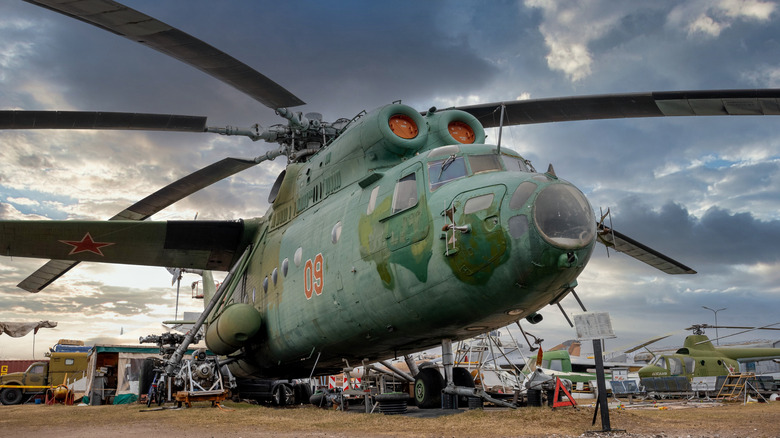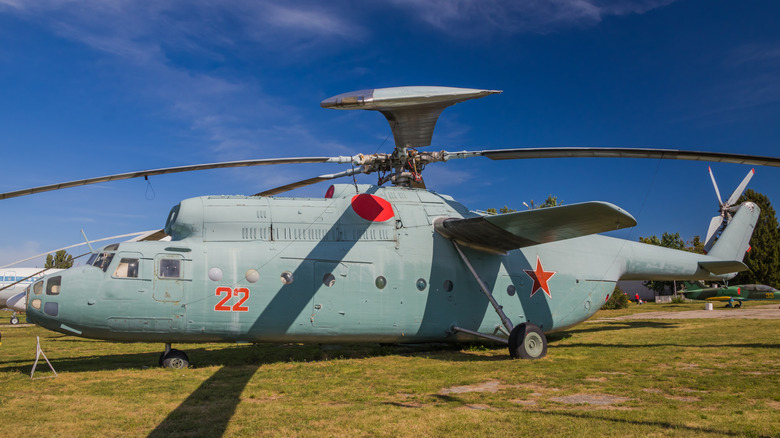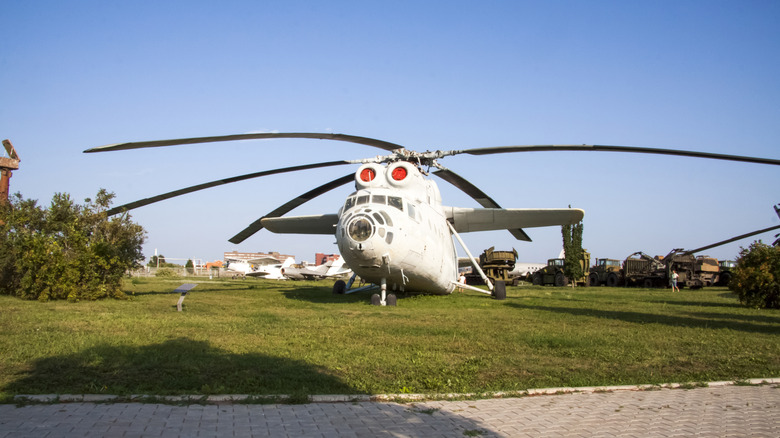Why Did The Mil Mi-6 Helicopter Have Wings? The Reason Behind The Strange Design
Helicopters are among the most sophisticated aircraft the world of aviation has on offer. While fixed-wing aircraft, such as jetliners and fighter jets, have been known to carry more passengers or firepower (depending on the application) and boast higher speeds, there's something about the versatility and adaptability of a helicopter that cannot be beaten. Today, these helicopters occupy several niches in the world, from military search and rescue aircraft such as the indispensable Boeing CH-47 Chinook to civilian helicopters like the Bell 407 and Leonardo AW139, which are among the fastest civilian helicopters available.
Many helicopters have defining features that make them unique. Some, like the CH-47, are known for their powerful tandem rotor configuration, while others, such as the toad-like Sikorsky CH-37 Mojave, are known for the odd positioning of their loading doors and engines. Among these iconic aircraft exists the Mil Mi-6, a Soviet-era helicopter known for having stub wings. These wings served to generate lift for the craft at cruising speed, thereby relieving the main rotor of some of the load. This allowed the Mi-6 to perform comparatively better, especially when considering its substantial size.
The Mil Mi-6 was a beast of an aircraft
The history of the Mil Mi-6 reaches back to the mid-20th century, when the Soviet Union designed the craft to meet its military requirements for a large, heavy-lift helicopter. Regarded as the country's first turbine-powered helicopter, the Mi-6 had its maiden flight in 1957, with five prototypes, known as the V-6 prototypes, built. At the core of the aircraft's design was the need to perform heavy-lifting duties, which at the time might have seemed like a tall order for a helicopter. Nonetheless, the V-6 prototypes, equipped with their remarkable design and components, managed to accomplish this, even matching the capabilities of Lockheed Martin's C-130 Hercules in terms of strength.
The Mi-6 was a beast of an aircraft, with two turbo-shaft engines that enabled it to be the first turbo-shaft-powered helicopter to exceed 187 miles per hour. This is despite its sheer size, which measured 108 feet and 10 inches in length, 114 feet and 10 inches in width, and 32 feet and 4 inches in height. While the craft weighed 60,000 pounds when empty, it boasted a maximum takeoff weight of around 93,000 pounds. Even more interesting, though, were its applications.
A stand out among its peers
The Mi-6 came in several variants, allowing it to be used in both military and civilian settings. The first notable mark was the military Mi-6, which was primarily a first-generation heavy-lifter, as had been desired by the Soviet Union's military. There was a military transport variant, the Mi-6T, and a civilian variant known as the Mi-6A. While the Mi-6T could seat up to 70 passengers, the Mi-6A had a seating capacity of 90. Other versions would emerge down the line, including the Mi-6S MEDEVAC, used for medical purposes, the Mi-6TZ and Mi-6TAZ, utilized as fuel transports, and the Mi-6PP, which served as an electronic reconnaissance platform, to name a few.
In its peak years, the Mi-6 served multiple roles and set some notable records, which, along with its size and iconic stub wings, made it stand out among its peers. Its engines were also impressive, matching the power of those that powered aircraft like the Boeing CH-47F Chinook Block II and Sikorsky CH-53K King Stallion, which are among the most powerful helicopter engines ever to take to the sky.


